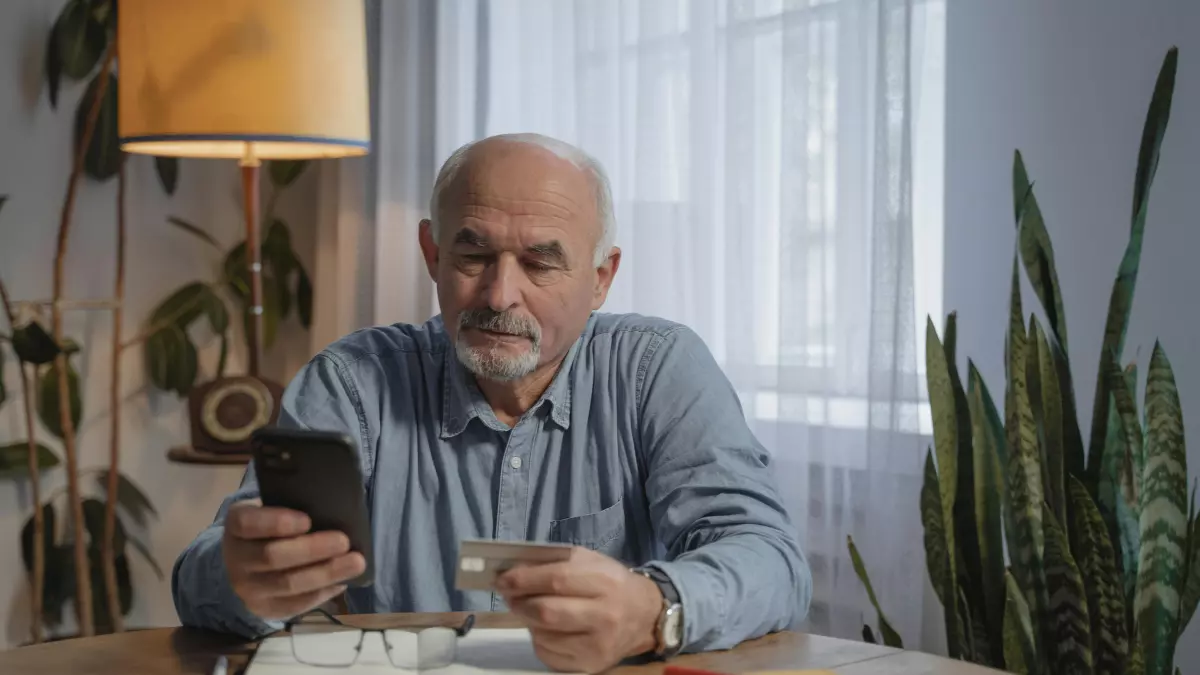Digital Payments Pioneer
"The future of money is digital currency." - Bill Gates

By Nina Schmidt
Have you ever stopped to think about how often you actually use cash these days? Or, more importantly, how often you don't? From tapping your phone at the grocery store to sending money to a friend with just a few clicks, digital payments have become the norm. But who’s the mastermind behind this seamless shift from paper to pixels?
It wasn’t that long ago that the idea of paying for things without physical money seemed like something out of a sci-fi movie. Yet, here we are, living in a world where digital payments are not just an option but often the preferred method. So, who do we have to thank for this transformation? Let’s dive into the story of the innovator who made digital payments a reality.
The Early Days: A Vision for a Cashless Future
Before we get into the nitty-gritty of digital payments, let’s rewind to the early 2000s. Back then, the idea of a cashless society was more of a pipe dream than a practical reality. Sure, credit cards were around, but they were clunky, and online payments were still in their infancy. Enter our visionary—a tech leader who saw the potential for a world where money could flow as easily as information.
While many were focused on building the next big social media platform or revolutionizing search engines, this individual had their eyes set on something different: making payments as frictionless as possible. They believed that the future of commerce wasn’t in physical wallets but in digital ones. And they were right.
Leadership Style: Bold, Risk-Taking, and Relentless
What sets this innovator apart from the rest? It’s not just their technical expertise (though that’s impressive too). It’s their leadership style. They didn’t just follow trends—they created them. This person was bold, willing to take risks that others weren’t, and relentless in their pursuit of innovation.
In the early days, many people doubted the feasibility of digital payments. There were concerns about security, infrastructure, and whether consumers would even trust such a system. But this leader wasn’t deterred. They pushed forward, confident that they were on the verge of something game-changing. And, as we now know, they were right.
Ironically, one of the biggest hurdles they faced wasn’t technological—it was psychological. Convincing people to trust digital payments was no small feat. But through a combination of education, innovation, and sheer determination, they managed to break down those barriers.
The Innovations That Changed Everything
So, what were the key innovations that made digital payments possible? It wasn’t just one thing—it was a combination of several groundbreaking technologies and ideas. First, there was the development of secure encryption methods that made online transactions safe. Without this, digital payments would have never taken off.
Next came the rise of mobile technology. As smartphones became more ubiquitous, so did the ability to make payments on the go. This innovator recognized early on that mobile would be the key to unlocking the full potential of digital payments. They worked tirelessly to integrate payment systems with mobile devices, making it easier than ever for consumers to pay with just a tap.
But perhaps the most significant innovation was the creation of a seamless user experience. This leader understood that for digital payments to truly succeed, they had to be as easy—if not easier—than traditional methods. They focused on making the process as intuitive as possible, removing any friction points that could deter users.
Challenges Along the Way
Of course, no innovation comes without its challenges. One of the biggest obstacles this visionary faced was the issue of security. In the early days of digital payments, there were numerous concerns about fraud and hacking. People were understandably hesitant to trust a system that seemed vulnerable to cyberattacks.
But instead of shying away from these challenges, this leader tackled them head-on. They invested heavily in cybersecurity, working with some of the brightest minds in the field to develop systems that could protect users’ financial information. Over time, these efforts paid off, and digital payments became not only convenient but also secure.
Another challenge was regulatory. Governments around the world were slow to adapt to the rise of digital payments, and there were numerous legal hurdles to overcome. But once again, this leader’s persistence paid off. They worked closely with regulators to ensure that digital payments were compliant with local laws, paving the way for widespread adoption.
The Legacy: A Cashless World?
Today, digital payments are everywhere. Whether you’re buying a coffee, paying your rent, or splitting the bill at a restaurant, chances are you’re doing it digitally. And while there are still some holdouts who prefer cash, it’s clear that the future is digital.
So, what’s the legacy of this tech leader? They didn’t just create a new way to pay—they fundamentally changed the way we think about money. Thanks to their innovations, we now live in a world where payments are faster, more secure, and more convenient than ever before.
But perhaps the most significant impact of this leader’s work is the way it has democratized access to financial services. In many parts of the world, traditional banking systems are inaccessible to large portions of the population. But with digital payments, anyone with a smartphone can participate in the global economy. That’s a game-changer.
What’s Next?
As we look to the future, it’s clear that digital payments are only going to become more prevalent. With the rise of cryptocurrencies, blockchain technology, and even more advanced mobile payment systems, the possibilities are endless. And while this innovator may have laid the foundation, there’s still plenty of room for growth and innovation.
So, the next time you tap your phone to pay for something, take a moment to appreciate the visionary who made it all possible. They didn’t just change the way we pay—they changed the way we live.





